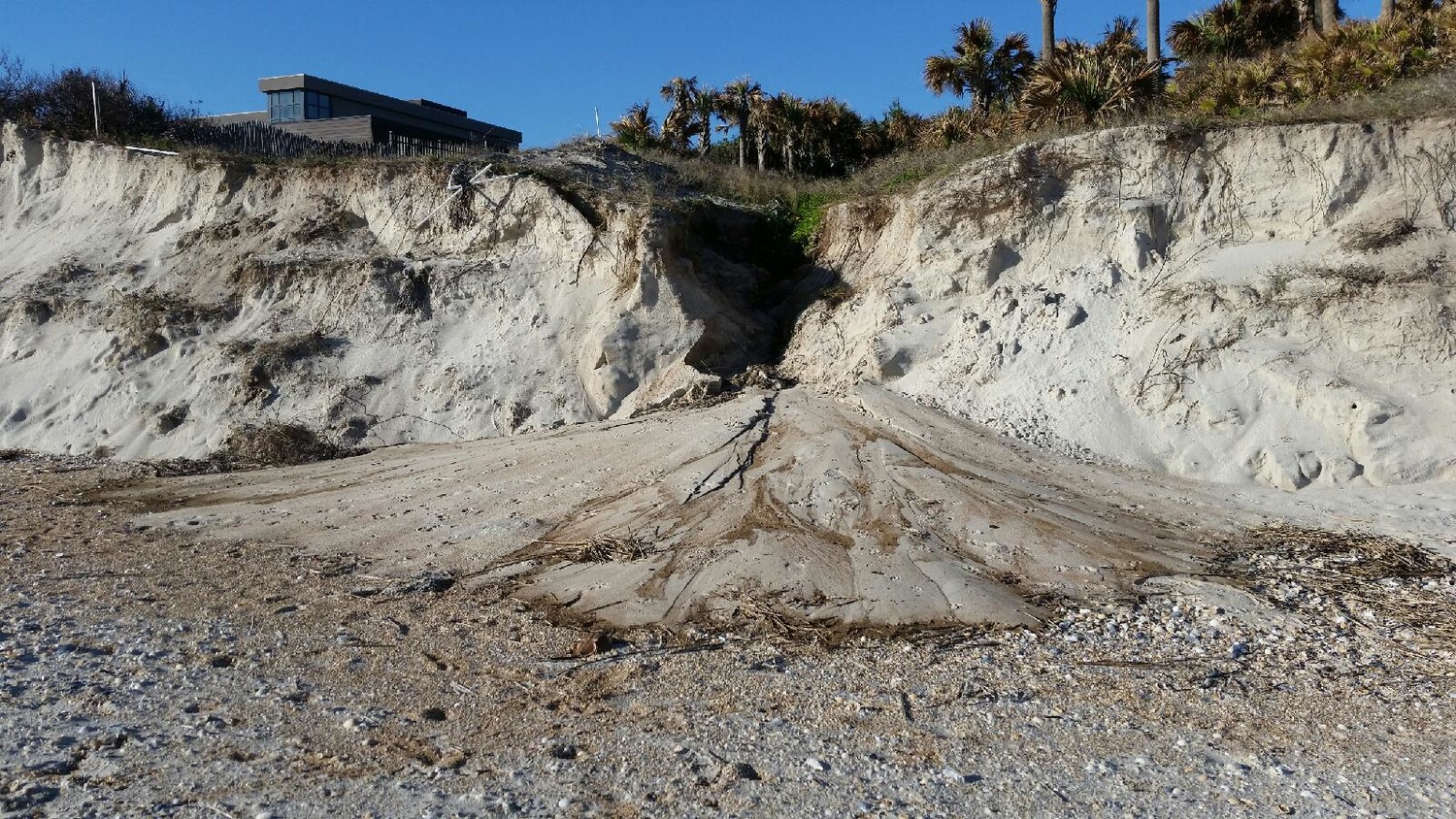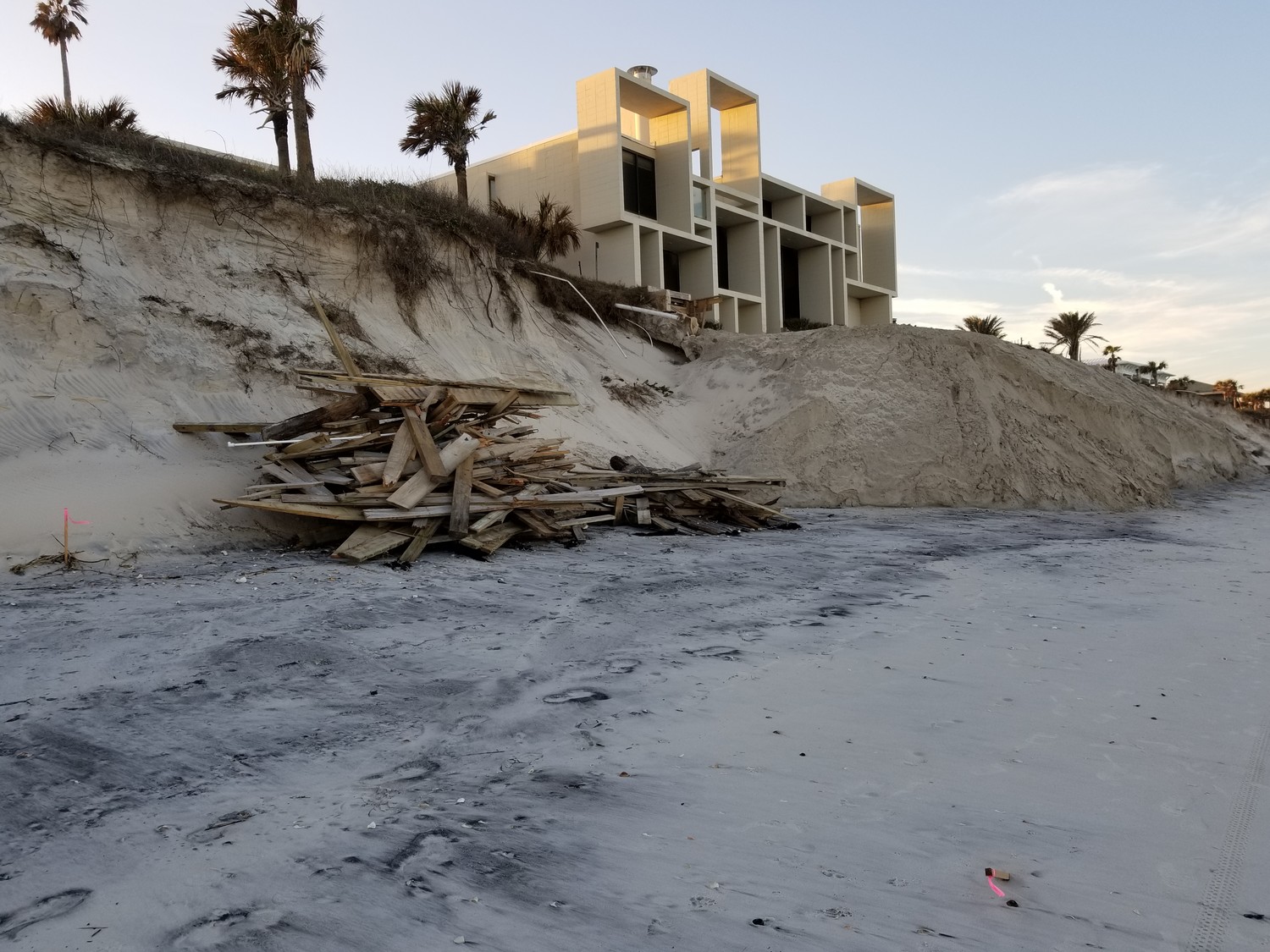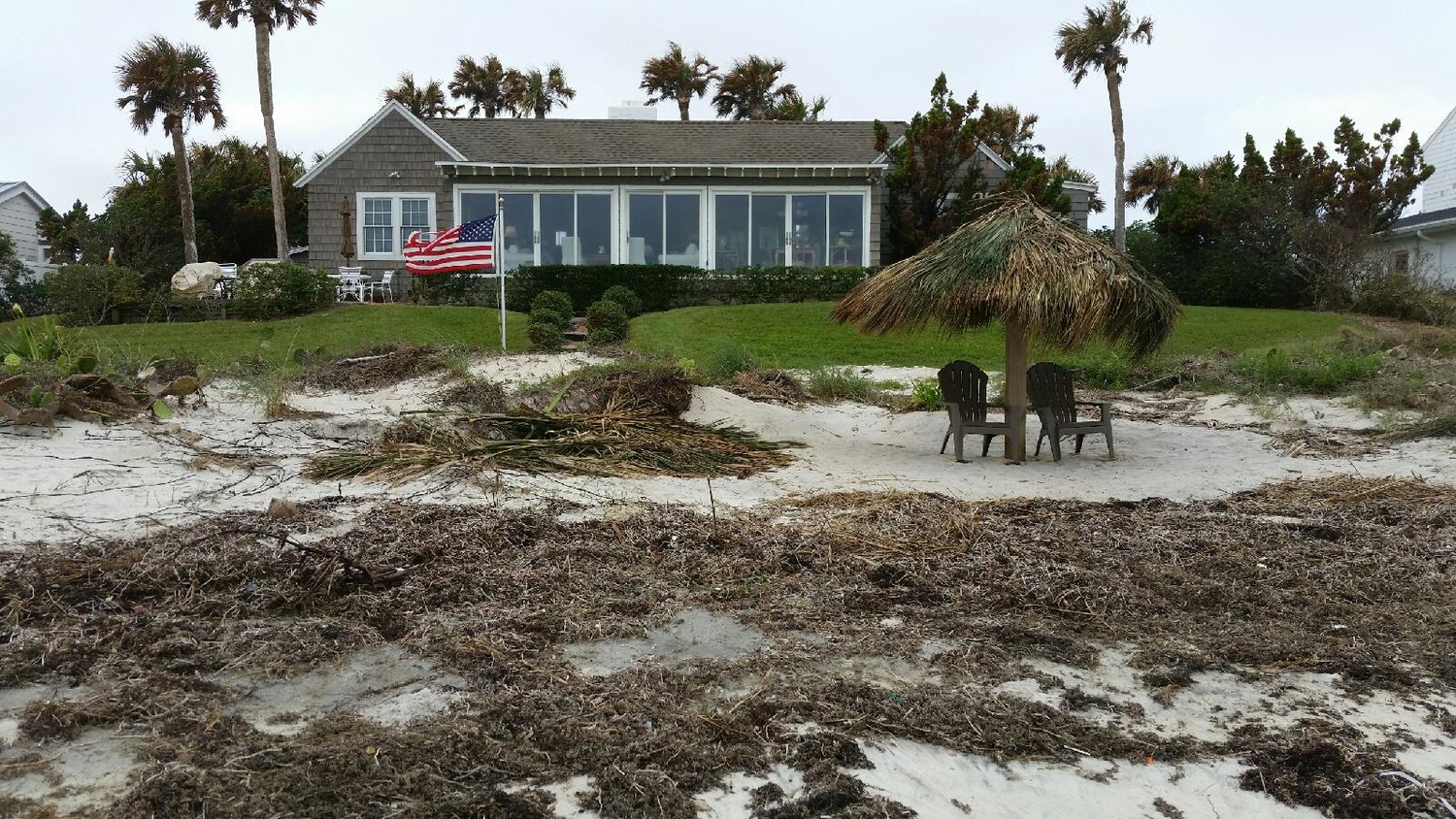Poll: Ponte Vedra Beach residents overwhelmingly support beach renourishment project
A survey being circulated by the organization Save Ponte Vedra Beach has revealed that 93 percent of the respondents would support a self-funded and state-funded beach renourishment project to save Ponte Vedra’s beaches from damage caused by recent hurricanes.
The survey, which will be available at savepontevedrabeach.com until the end of December, has garnered 400 responses from individual property owners, according to Ponte Vedra resident and Save Ponte Vedra Beach leader Dr. Shyam Paryani. The survey has also received positive responses from communities like The Plantation at Ponte Vedra Beach and Sawgrass Country Club. In total, Paryani said about 700 people back the project, which group representatives say will span from the Ponte Vedra county line to the Guana Tolomato Matanzas National Estuarine Research Reserve.
Those who support the measure are voting to self-fund a coastal “assessment” and ultimate beach renourishment project, potentially via a Municipal Service Taxing Unit (MSTU).
“It’s not a tax per say,” clarified Paryani. “Our goal would be to do an assessment based on the utility of the beach. This is not related to a property tax. It’s a separate assessment only done to property owners who will decide to participate. They would agree to an assessment based on an economic study from a third-party to determine what economic benefits arise from the actual renourishment of the beach.”
Save Ponte Vedra Beach also plans to lobby the state for matching funds to set the plan in motion. The group has engaged Jacksonville-based engineering firm Olsen Associates to initiate a study of the beaches and determine which renourishment program would be best. The residents also plan to hire an economic consultant who can determine what is fair for each homeowner to pay for the project. Paryani said Save Ponte Vedra Beach members plan to meet with St. Johns County officials next week to further discuss the project and get plans formalized. The exact cost of the Ponte Vedra group’s proposed renourishment project is to be determined.
According to Paryani, similar efforts were executed successfully in Amelia Island where locals formed a self-funded project that eventually received federal and state funding.
"If you look at what happened in Amelia Island, they started that process in 1995, and they now have a sustainable project that they renourish every few years whenever damage is done," he said.
If nothing is done to renourish the coastline, Ponte Vedra residents within the organization are concerned that the beaches will soon be unusable, and homes could be threatened due to significant erosion triggered by hurricanes, nor’easters and high tides.
"You can't even walk on Ponte Vedra Beach at high tide," said Paryani. "There's very little beach to walk on, so that shows significant erosion. On top of that, there's coastal erosion with the dunes significant on many of the homes to the point where the homes have actually been threatened."
For more information on Save Ponte Vedra Beach, visit www.savepontevedrabeach.com or contact the organization by email at SavePVBeach@gmail.com.
Reviewing regulations to prevent property damage
Another local resident who is concerned with beach erosion is Dr. John Scott Boggs, who lives on Ponte Vedra Boulevard. He attended the first Save PVB meeting, but has since been collecting facts on his own with a coastal engineer and reviewing the coastline to determine how to avert damage from severe weather events in the future.
Boggs thinks it's possible to do so by tightening regulations on a home’s proximity to the water. The Ponte Vedra Beach resident said homeowners are disregarding the dunes by building too close to them.
"It appears to me that the structures that are significantly threatened are the ones that have been built too close to the coast," Boggs asserted. "Certainly, they should not be built in any way seaward of the coastal construction line. The thing about that is, the coastal construction line has not been changed even though we've lost somewhere between 30 and 60 feet of beach."
Boggs explained that the Coastal Construction Control Line (CCCL) program regulates properties built on the coast that can harm the beach environment, destabilize dunes or cause erosion. Boggs believes the line should be changed because he said the shape of the coast has been warped over the years due to erosion, but he also believes redefining the line would be difficult.
According to David Krieger of the CCCL program, the coastal construction line was last changed in St. Johns County in January 1988.
To protect property along the coast, Boggs believes beachfront owners and the rest of the Ponte Vedra Beach Municipal Service District should be raising awareness and pushing for a more stringent permitting process. Although tightening regulations is not an easy task, Boggs believes it can and must be done.
Boggs said current regulations allow a building to be built along the coast as long as it does not adversely impact the dunes or its neighbors, and it is located landward of the 30-year erosion projection. Krieger confirmed this to be true but said a few exceptions apply to these rules. For instance, he said a continuous frontal dune must be established, and the building must have been platted prior to 1985.
Regardless of the exceptions, Boggs believes the regulations, in general, are out of date.
"I'm not entirely sure anybody knows exactly what that [erosion] projection is," Boggs noted. "Right now, after Irma, Matthew and the nor’easter did a number on us too ... the 30-year erosion projection has changed because the beach has lost 30 to 60 feet."












